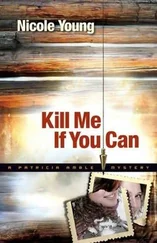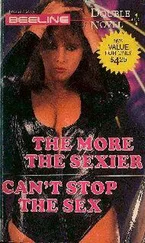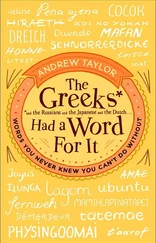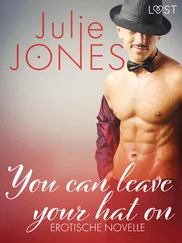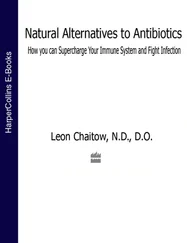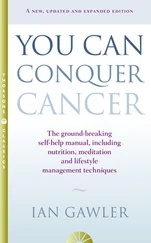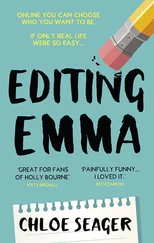He had already been on briefly, at the top of the hour, to give a general introduction to tonight’s show before tossing the baton to Carlos Moreno, who’d guided the first forty-five minutes of the program through four other crimes, each segment hosted by another Crime Seen! reporter. With the exception of Moreno, all of these were canned, even the segment-host wraparounds pre-recorded.
“On-air feed!” Hughes announced.
The picture on the monitor switched to a commercial in progress, followed by the familiar Crime Seen! title card, over which was suddenly stamped a severe stenciled Killer TV logo — tinny audio, piped on set, made the mysterious, synthesizer-heavy theme seem a little silly to Harrow.
Carmen Garcia’s voice, a confident contralto, spoke over the title card: “Tonight we debut Crime Seen!’s Killer TV segment...”
A publicity shot of Harrow filled the screen.
“...with host J.C. Harrow on the road in Placida, Florida...”
Helicopter shots of quiet little Placida by day rolled across the monitor.
And now Carmen filled the screen, her attractive office-worker demeanor replaced by the glamorous aura of a star worthy of a TV Guide feature article (see this week’s issue). She wore a black suit with a white silk blouse, unbuttoned just enough. Her dark hair was perfectly coiffed, and her makeup looked invisible (thank you, Hair and Makeup Department).
Positioned in front of the Crime Seen! semi-trailer, a Killer TV logo prominent to her one side, she spoke into her own UBC handheld microphone: “This quiet village was the scene of a tragedy that our forensics investigators have tied to the similarly tragic crime out of which Crime Seen! itself emerged.”
Under that had played file footage from Des Moines Channel 8 of police outside the Harrow home on that terrible night. The host glanced away as Carmen’s voice continued.
An assistant director, also with a headset, had a pointing finger held upward, like a starting gun, waiting as Carmen said, “And now, here is your host, J.C. Harrow...”
The AD’s pointing finger aimed itself at Harrow.
“For there to be a war on crime,” Harrow said, invoking the catchphrase he’d made famous on Crime Seen! , “we must all be warriors... Ladies and gentlemen, good evening.”
Last year, he had worked hard, with the help of many behind the scenes, to combine a serious, almost grave demeanor with a confident, somewhat affable vocal tone.
“I know there are a lot of expectations about what’s been happening this summer, and what we’ll be doing with our new Killer TV segment this fall.”
Looking right through the camera, Harrow said, “Public response has been mostly favorable, from snail mail to blogs to Twitter... and we thank you for that. But there’s been criticism too.”
Harrow turned left, where Arroyo’s camera (and another prompter) waited, providing a tighter shot. “I’ve been accused of exploiting the deaths of my wife and son... out of a desire for fame, or in a misguided effort to keep my loved ones ‘alive.’”
In Harrow’s earpiece, director Stu Phillips in New York whispered: “Make them wait for it, J.C.”
Finally Harrow said, “You may be right.” His smile was sad — that it was intentionally so made it no less real. “And I can guarantee my wife would be offended, if I turned this into a media circus.”
In cameraman Arroyo’s ear, director Phillips said, “Go in tighter, Leon... nice and tight...”
“On the other hand, I believe Ellen would support me — does support me — in bringing our son’s murderer to justice. She would encourage me to do everything in my power to do that — and David would feel the same, where his mom was concerned.”
His eyes were tear-filled. Though he was reading the words, words he had only co-scripted, the emotion was genuine.
“And until we have their killer or killers, I promise you this — I will not speak to you of my family again.”
Harrow turned back to Hathaway’s camera position, who was ready with an even tighter close-up.
“I understand that some of you may find what we’re doing distasteful, and if we offend you, turn us off, switch the channel... but as you do, ask yourself — would you do any less for your family?”
The monitor revealed that the director in New York had cut away to a pre-recorded wide shot of the ranch-style home at night with lovely palm trees and a full moon touched by dark smoky clouds providing a picturesque, vaguely film noir effect.
Over this image Harrow was saying, “Carmen, could you bring us up to speed?”
Back on camera at the semi-trailer, Carmen said, “Thank you, J.C. Over the summer, our Crime Seen! team has been very busy following leads.”
Dingle was waiting with hand-held to follow her up the stairs of the trailer and inside. A pan of the lab revealed bustling activity within, staged but convincing (Carmen had spent much of the previous afternoon rehearsing her forensics stars, much to their dismay).
Nearest was Michael Pall, sitting at a computer monitor. The diminutive DNA scientist wore a white lab coat with his name on the left breast over the UBC logo set within a magnifying glass (Harrow had put his foot down, and the Killer TV logo was conspicuously MIA). Under the lab coat, Pall wore a light blue button-down dress shirt and a darker blue tie with a geometric pattern.
Carmen guided Pall down a path of easy questions concerning the DNA of the corn leaf found at the Ferguson crime scene. They were not on prompter, but the exchange was very much canned.
“Does that mean we know where the killer is from?”
“No,” Pall said, “that’s too big an assumption. But we’re making progress.”
“How so?”
“We know where in Kansas that particular corn seed was sold. It will help us narrow down where the killer might have traveled.”
“Anything else?”
Pall gestured toward a table on the other side of the lab, where Billy Choi sat at a computer screen displaying two bullets side by side. Under his UBC-insignia lab coat, Choi wore a navy blue T-shirt emblazoned with a huge badge and the words NYPD HOCKEY.
After introducing Choi as the resident firearms expert, Carmen said, “What’s the story of these bullets, Billy?”
Playing to the camera, Choi said, “These two slugs represent evidence developed using NIBIN.”
“NIBIN?”
“National Integrated Ballistics Information Network.”
“Which is?”
To Harrow, the pair seemed to be competing for the camera, trading smiles, but the audience probably thought they were just flirting a little.
Choi was saying, “NIBIN’s an imaging system and database of firearms-related evidence developed by the FBI and the ATF in partnership. Each had their own ballistics imaging programs — Drugfire at the FBI and IBIS at ATF — but NIBIN allows the two to communicate, and share information.”
“What have you learned using this technology?”
Choi pointed at the bullets on the screen, and the camera moved in, Harrow’s monitor filled now with the two bullets. “The bullet on the right came out of Stella Ferguson — from a nine-millimeter automatic, a completely different type of bullet than the one used in the murders at the Harrow home.”
“Does that mean different perpetrators in these two cases?”
“No, just that a different weapon was used. May or may not be the same killer, but there are significant similarities in the crimes... Still, the weapons don’t match.”
“To the layperson,” Carmen said, “these bullets look the same.”
“Actually, they’re not.”
Читать дальше
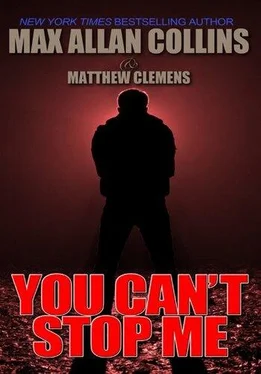

![Сьюзан Кейн - Quiet [The Power of Introverts in a World That Can't Stop Talking]](/books/33084/syuzan-kejn-quiet-the-power-of-introverts-in-a-wo-thumb.webp)
